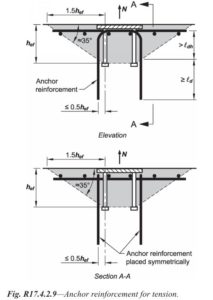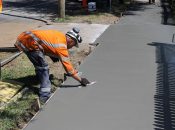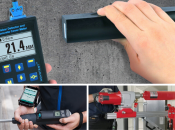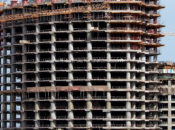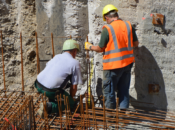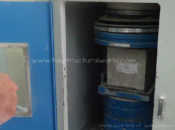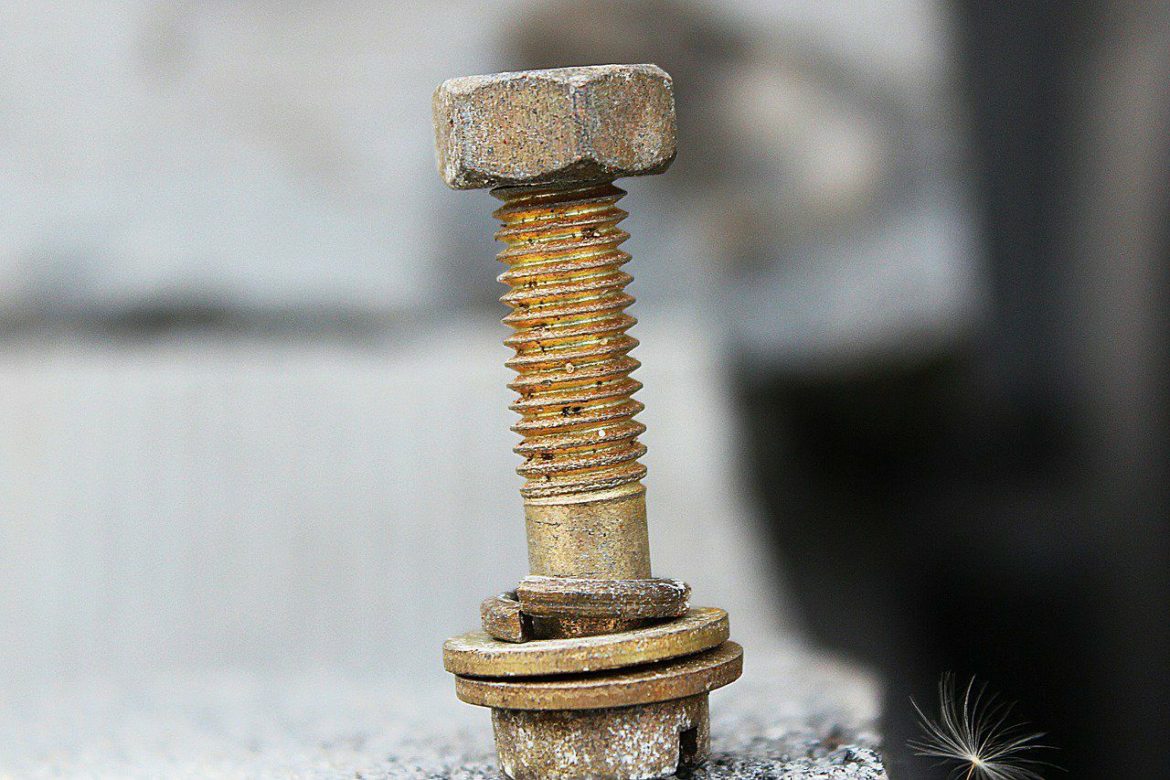
This article tackles the design consideration of anchoring to concrete under shear loadings. This is the part two of the previous article, Anchoring to Concrete: Tensile Loadings.
As summarized in the previous article, the Strength design of anchors shall be check and satisfy the following criteria:
- Tension Loadings
- Steel strength of anchor in tension
- Concrete breakout strength of anchor in tension
- Pull out strength in tension
- Concrete side face blowout strength of headed anchor in tension
- Bond Strength of adhesive anchor in tension
- Shear Loadings
- Steel strength of anchor in shear
- Concrete breakout strength of anchor in shear
- Concrete pry out strength of anchor in shear
Design Requirements for Shear Loadings
A. Steel strength of anchor in shear (17.5.1)
The nominal strength of anchor in shear as governed by steel shall be evaluated by the calculations and shall not exceed:
- For cast-in headed stud header (17.5.1.2a)
- For cast-in headed bolts or hooked bolts anchors and post-installed anchors ( 17.5.1.2b)
where:
is the effective cross-sectional area of an anchor in shear (sq. inch)
smaller of 1.9
or 125000psi
B. Concrete breakout strength of anchor in shear (17.5.2)
The nominal concrete breakout strength in shear of a single anchor or group of anchors
shall not exceed:
- For shear force perpendicular to the edge on a single anchor (17.5.2.1a)
- For shear force perpendicular to the edge on a group of anchors (17.5.2.1b)
- For shear force parallel to an edge,
or
shall be permitted to be twice the value of the shear force determined from above two equations, 17.5.2.1a and 17.5.2.1b.
- For anchors located at corners, the concrete breakout strength shall be determined for each edge with the minimum value to use.
Factors of are as follows:
shall be calculated using the smaller value of
are as follows:
1.4 for anchors located in a region of a concrete member where analysis indicates no cracking at service load
For anchors located in a region of a concrete member where analysis indicates cracking at service load
1.0 for anchors in cracked concrete with edge reinforcements smaller than no. 4 bar
1.2 for anchors in cracked concrete with edge reinforcements of a no. 4 bar
1.4 for anchors in cracked concrete with edge reinforcements of a no. 4 bar or greater between the anchor and the edge
C. Concrete pry out strength of anchor in shear (17.5.3)
The nominal pryout strength, for a single or
for group of anchors shall not exceed the following:
where:
For and
, refer to Concrete breakout strength of anchor in tension (17.4.2) in the previous article Anchoring to Concrete: Tensile Loadings .
Further checks for both tension and shear loadings has to be performed in accordance with the Interaction of Tensile and Shear Forces for combined shear in Vy&Vz direction and the combined ratio of bi-shear that should not be more than 1.2.
Anchor Reinforcement Details for Tension
The recommended details as an excerpt from the Fig. R17.4.2.9 OF ACI 318M-14 shall be followed as per the figure below.
Tell us about your thoughts! Feel free to leave a comment on the comment form below.

